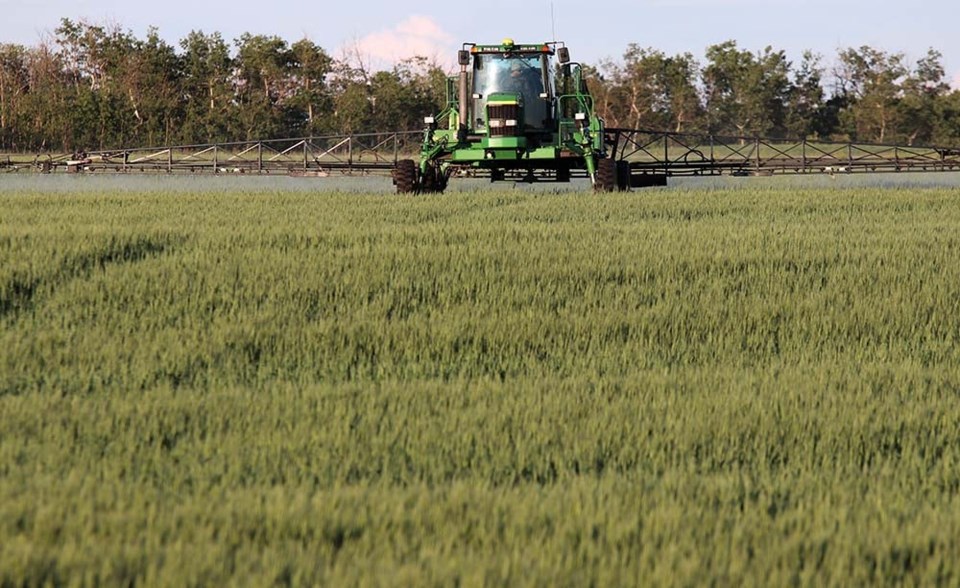WINNIPEG, Man. — Leaders of agricultural groups in Canada often use the same phrases when speaking to the media.
If the topic is a new ag technology, they’ll usually describe it as “another tool in the tool kit.”
When the topic is agricultural trade or barriers to trade, they’ll say that Canada’s regulatory systems are “world class and decisions are solely founded on science.”
The claim that Canada’s regulatory systems are based on science may now be outdated.
The weight of evidence suggests that decisions around pesticides and new ag technologies have become political.
Public concerns and politicians responding to those concerns have become part of the regulatory process.
“What’s interesting is this government has been at pains to say that politicians shouldn’t interfere with the scientific conclusions of regulators on environmental policy and climate change, but that is exactly what they appear to be doing on pesticide regulation,” a regulatory consultant told The Western Producer in October.
People in Canada’s crop protection industry, innovators and ag investors have made similar comments in the last 12 to 36 months, claiming that something has changed in Ottawa.
Many point to a decision around glyphosate as the prime example of political interference.
Backing up six years, in April 2017 Health Canada released its re-evaluation decision for glyphosate, the most common herbicide in the world.
Health Canada scientists made it abundantly clear that glyphosate is safe.
They said:
- Glyphosate is not genotoxic and is unlikely to pose a human cancer risk.
- Dietary exposure associated with the use of glyphosate is not expected to pose a risk of concern to human health.
- Occupational and residential risks associated with … glyphosate are not of concern, provided that updated label instructions are followed.
Glyphosate critics said Health Canada used flawed evidence or science skewed by Monsanto to make its decision.
Health Canada reviewed what the critics had to say and published another statement on glyphosate in January 2019.
The federal experts stood by their initial decision.
“Our scientists left no stone unturned in conducting this review…. No pesticide regulatory authority in the world currently considers glyphosate to be a cancer risk to humans at the levels at which humans are currently exposed.”
That is a strong statement.
Health Canada made it clear it relies on science rather than postings on social media or nutball conspiracy theories.
That position, separating science from the politics, seemed to unravel in 2021.
In May of that year, Health Canada’s Pest Management Regulatory Agency proposed to increase the maximum residue limits of glyphosate on certain foods and ingredients, including rolled oats, barley bran, pearled barley, wheat germ, peas, lentils and beans.
With the increase, Canada’s residue limits would be similar to those in the United Sates and other countries.
“The glyphosate review is supposed to bring Canada’s low MRL on dry beans, of four parts per million and five p.p.m. on peas, into line with the FAO-WHO recommendation from May 2019 of 15 for beans and 10 for lentils and peas,” The Western Producer reported in 2021.
The decision to permit more glyphosate on food and ingredients was unpopular in Quebec and likely in big cities, where there is strong support for organic farming.
In August 2021, about seven weeks before the federal election, three federal ministers announced a “pause” on increasing maximum residue limits for glyphosate and other pesticides.
They said it was necessary because the government was investing millions into PMRA to make pesticide reviews more transparent and independent.
As of November, the “pause” on residue limits for glyphosate is still in place.
And this June the federal government took another step to limit the use of glyphosate by banning the use of all cosmetic pesticides on federal lands.
So, let’s review:
- In 2019, scientists with Health Canada say glyphosate is safe and not a cancer risk.
- In 2023, the federal government bans the use of a safe herbicide on federal lands and refuses to increase the residue limits for that safe herbicide.
Clearly something has changed.
It’s likely the Liberals now understand that defending pesticides based on the science is a political hazard in Montreal, Toronto and Vancouver.
The biggest threat to the Liberals in those cities is the NDP.
The bad news for farmers and Canada’s ag industry is that the political inference could get much, much worse.
There is a scenario where the NDP gain seats in the next federal election and the Liberals lose seats to the Tories but the Liberal-NDP coalition remains in power.
The NDP would have more influence and could push harder for policies that crack down on pesticides.
Science would become part of how regulations are written for pesticides and other ag technologies. The other part would be public sentiment in Montreal, Toronto and Vancouver.
Contact [email protected]
Bookmark SASKTODAY.ca, Saskatchewan's home page, at this link.




